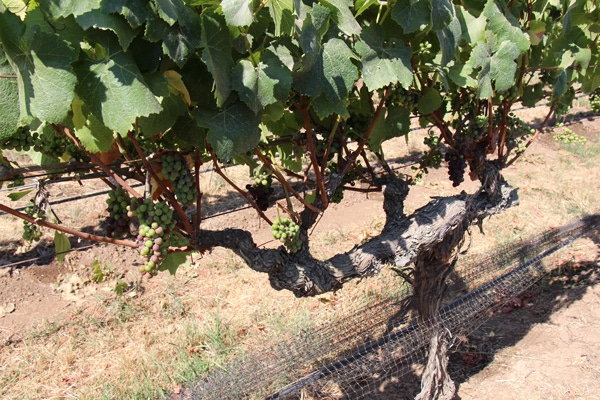
Lodi grower’s harvest begins light on tonnage, strong in fruit quality
Most of Hoffman Vineyards’ main varieties – Chardonnay, Sauvignon Blanc, Petite Sirah, Malbec and Zinfandel –are sold to other wineries. However, Hoffman also produces smaller amounts of Cabernet Sauvignon, Chenin Blanc, Charbono, Pinot Grigio and many others for his own Heritage Oak Winery.

Lodi area wine grape grower Tom Hoffman probably won’t be scheduling any more vacations in August. This year, he was forced to cancel his planned pre-harvest get-away to start harvesting his 180 acres of grapes in mid-August. That’s about three weeks earlier than usual.
The fifth generation of his family to farm in San Joaquin County, Hoffman has been growing wine grapes near Acampo, Calif., since 1987. That’s when he switched from table grapes.
Most of Hoffman Vineyards’ main varieties – Chardonnay, Sauvignon Blanc, Petite Sirah, Malbec and Zinfandel –are sold to other wineries. However, Hoffman also produces smaller amounts of Cabernet Sauvignon, Chenin Blanc, Charbono, Pinot Grigio and many others for his own Heritage Oak Winery.
As usual, Hoffman’s harvest started with Chardonnay, followed by his Chenin Blanc and Pinot Grigio. Then, in an unusual twist in the order of maturity, the first of his Zinfandel ripened before the Sauvignon Blanc, he reports.
This year, Hoffman’s crop is about half the size of 2013. That may reflect the continuing drought. But he thinks the more likely reason for the big drop in yields is due to the vines recovering from the large crops they produced in each of the last two years.
So far he’s been pleased with the quality if this year’s fruit. He picked his Chardonnay at 22.5º Brix and a pH of 3.45, both indicators of good quality. In the first day or two of September, Hoffman measured Brix levels of 23º in his Cabernet Sauvignon, about 3º or 4º shy of his harvest target, and 22.5º in his Malbec, which he likes to pick at 26º.
Despite his usual spring fungicide applications, he’s been seeing a little bit of bunch rot developing in his Zinfandel, which he planned to pick on Sept. 5.
“The disease has been pretty wide spread in the Lodi area this year,” Hoffman says. “But it’s not as bad as last year. Then, I had to cut out infected clusters before we harvested them. I probably won’t have to do that this year.”
His drip-irrigated vineyards rely completely on water from his wells. When he checked them several years ago, his wells were pumping water at depths of about 80 to 100 feet. “At the rate growers in this area have been pumping water this year, I’m sure the water table is declining. We need more water.”
Normally, during July, the height of his irrigation activity, Hoffman provides water to his vines twice a week. This year, due to the dry weather, he was irrigating every other day.
Because of the dry soils this winter, he ran water to his vines for a 24-hour period in each of the first three months of the year. He didn’t begin irrigating again until mid-May, when he started applying water twice a week.
“Slacking off on the water in April and the first part of May created some stress in the vineyards,” Hoffman says. “If we have another dry winter, I’ll start the regular watering next year earlier in the growing season.”
Unlike the past two seasons, this year’s early harvest has eased the job of finding crews to pick the grapes, he adds. “We got a head start on the harvest in Napa Valley, where growers can afford to pay higher wages that attract the workers we need here.”
About the Author(s)
You May Also Like



